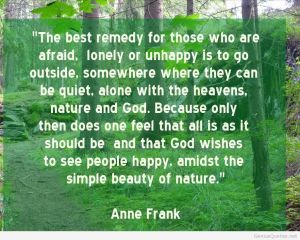
Photo by Roger Brown
Editor’s Note:
When we attempt to experience life fully and try new things, and even sometimes scary things — it can be a kind of creativity. We’re creating something new when we risk and step out. The following is a personal account of one woman’s somewhat reluctant experience attending a high-speed driving school. She drove an incredibly fast car around a track at speeds of 100 mph. Many people – most of them men – dream of this kind of chance-of-a-lifetime. She was not one of those adrenaline junkies. Her husband won the racing school opportunity, and invited her along since the prize was for two students. She decided to try it out.
Of course, people can “get high” on danger, or even become addicted to the thrill of risk. That overindulgence aside, within reason and with balance, we all need to do this almost daily. Risking rejection from our friends and children, spouse or parents for instance, when we decide cautiously to share important truths that can help a relationship grow.
***
By Laura Senti
I was in the middle of a live version of a nightmarish dream I have periodically in which I am in a play. Starting time is imminent yet I am unable to find a script to read over the lines which I, as a main character, am of course supposed to know. I’ve never been to a practice, I have no costume, and all my fellow cast members appear absolutely unconcerned and separate from my plight and not inclined in the least to help me out. In my dream, I wander around in a growing state of panic before I wake up, always before going onstage.
Yesterday at 1:11, I was actually sitting in the Bondurant High Performance Racing School in Pheonix in a plain gray-carpeted room with a crowd of men, two at each black table. The same men who that morning had each been given a lanyard with a red tag saying “Grand Prix” and politely averted their eyes from my same tag while I knew they were thinking, “Is she something, or an idiot?” The red-shirted instructor man now at the front was happily explaining various diagrams on the screen in the front. I understood perfectly when he explained he was from Michigan about the need to avoid potholes, but felt this same pleasant connection with nothing else he said. “This,” he said, “is how you want to take the turn….blah blah blah blah…..and where is the weight on the car’s wheels now? ….blah blah blah…weight transfer…blah blah…apex of the turn….blah…and now here “– he walked to the white board to point out the squirmy oval at the top–”is the race track.” Mental sharp intake of breath. Race track? Me?
I had made it through the morning. But only by a narrow squeak. I had almost not gotten into my yellow Corvette, number 08. But I did. I learned to strap on my four-point harness (just like a baby car seat, my mind encouraged me). I learned to press the top side of the button to set Zero Eight roaring (boy would this thrill my daughter), and had a quick refresher on the way over to the course on how to kill and restart a manual. I had been briefed on how to do a heel-toe shift: something like, Get into third gear and up to 65 miles per hour by these three cones, then when you see these two cones, put the car into second but instead of doing it the regular way — the way you would in a regular car if you were a regular person who wasn’t at a racing school for some unknown reason — as you pop it into second, rock your foot from the brake to the gas and then back again—see, like this—and then put it the rest of the way into second. This will allow you to have more speed in your turns.
Speed? And why would I want speed in my turns?
I was suddenly very sure that this was not for me. I did not know my lines for this play. I didn’t even know what this play WAS.
When it was time for a short break before the driving, I bolted out of the room toward the front desk. There sat Nicki, “Director of First Impressions.”
“Mmm, I need to talk to someone. I’m just sensing this is not for me,” I said with a little bit of a quaver in my voice. She looked mildly surprised. I guess they don’t get many people who pay $5000 to drive as fast as they can, saying they don’t want to after all.
Nicki got another red-shirted man who consulted another red-shirted man, and they told me I could switch over to the two-day course which would be more my speed, literally. “Mmmhmm. Thought this would happen,” they said without saying it out loud. But they were nice about it. Nightmare averted, for the time being. Now maybe THIS was a play I was really supposed to be in, even if it took some quick scrambling to learn my lines.
Our Red-Shirt Man had looked less than thrilled with his hesitant student. I was trying to ignore that—had even used that as fuel for courage as I ripped down the short straightaway getting up to 65 and downshifting to second, though not with that mysterious toe/heel method. He informed me at a break, with slight disgust, perhaps, that I had not been going from 1st to 2nd to 3rd, but from 3rd to 4th to 5th. I had thought it seemed a tiny sluggish for a Corvette, but I drive a 1999 Sienna minivan, not a car that can get up past 60 in second gear, and the Red Shirts had failed to mention this particular feature of the car. Who comes to this place that after all, that doesn’t know that already?
At lunch my husband reassured me over a Cherry Berry Chiller at McDonalds that I’d done great in that morning’s drill–”I couldn’t catch up to you, and I tried!”–but I am so nervous, I said to my husband. And all those other guys seemed so confident. “OH NO,” he reassured me. “They’re all scared, they’re all very nervous.” Momentarily, I felt a very little less fish-out-of-waterish—maybe I was supposed to be in this play after all? But very momentarily he went on to explain that they were all nervous about not being the fastest one. I was nervous about dying.
Who were these people? Who was this man next to me? How could it be that we were so absolutely unlike each other in this? Was it the classic man/woman stereotype showing in brilliant colors? My man, thrilled at the prospect of going as fast as he possibly could, and I unable to think beyond, “Why?!”

Competitive Cliff Diver
So it was after this surreal lunch discussion and the ever-more-alarming words coming from Friendly Michigan Red-Shirt Man at the front of the room that I turned to my husband, the only man in the room I knew. Did he really think I could do this? That I belonged here? He had said so at lunch. But, a $6000 deductible. A bit of background is necessary to explain:
You see, we hadn’t paid. We WON this. I mean, my husband won this, the GRAND PRIZE worth OVER $15,000, and he had invited me to go along. “You’ll have fun,” he said in response to my less-than-eager reaction to this grand-prize-experience-of-a-lifetime when he had first told me about it months ago.
“But what IS it? I don’t really get it.” (This is our typical conversation difficulty, I craving context and detail and he blithely persistent in declaring the obvious big-picture facts.)
“All people who go just come out better drivers, and it’s not just for race car drivers,” he assured me.
“I’ll TRY it,” I replied, “but I reserve the right to stop if I don’t like it, because I just can’t see myself doing anything like that.” I’d told very few people where we were going because I didn’t know how to explain it, and truthfully, the whole prospect of sunny Phoenix as a relief from the Michigan winter was greatly dimmed because I was feeling nervous. There’s always the issue of leaving your kids behind while you and your husband both are on the plane, the same plane; and sometimes, planes do crash and I don’t want my kids to be orphans. So I’d been busy dealing with that and hadn’t gotten to the Assuming You Survive the Plane Ride Now You’ll Be Racing Cars With Men Who Want To Drive As Fast As They Can part.
So when I had told anyone about going to Bondurant School of High Performance Driving, I had copied my husband’s attitude toward my going: “I bet it will be fun!” Said sincerely enough, though maybe with not a whole lot of knowledge to back it up.
I got back in Zero Eight again, now separated from my husband—but that was fine, because in this environment he had morphed into another sort of being altogether. I chugged over to Accident Avoidance Simulation (wasn’t this all accident avoidance?) This time the instructor explained the drill we’d be doing, I shot off all the questions I had, such as “Why can’t you put the clutch in when you are braking?” and I made exactly sure I knew the drill. I had figured out by now that I was almost wholly ignorant and figured it made no sense to act otherwise. I wasn’t tricking anyone, and I bet I asked questions that at least a few others in the group might have wanted to ask but wouldn’t because they were tricking others quite successfully. The drill: get to 30 mph in a few seconds; pass through a bottleneck where the cones were close together; then respond to a set of 3 lights that would turn on, that corresponded to 3 lanes that opened up at that point. At that moment, we would “Lift, Turn, and Squeeze” —lift our foot from the throttle, turn to whichever lane had the green light, and then squeeze down on the gas again to proceed. It was fun, even though I was hitting cones with regularity. “Think of them as puppies,” a kind young Red Shirt told me as I drove slowly by for feedback. Now that made sense and I think I only hit one more puppy after that. Next, we got to slam on the brakes when all the lights went red, and see for ourselves how much, much less effective that is than taking your foot off the gas and swerving. This I can do, I thought. And getting that Corvette to 40+ mph in such a short distance was great fun.
Next was the spinny car, or what the Red Shirts called the skid car. A regular enough looking car, it was perched on top of a set of smaller wheels which the instructor could at any time set spinning so the car would skid out of control and the driver could learn how to regain it. Strangely enough, it was applying gas, not brake, that brought the car out of the spin and back into control. I tried braking once—-and we just kept going around and around like a carnival ride.
“You have to keep your eye on the prize,” our red-shirted instructor explained as the car spun wildly out of control. I found it was true: the car will eventually end up pointed toward whatever your focal point is. One time, the cone I wanted was 180 degrees behind me. “Even now, I keep my eyes on that cone?” I asked Red Shirt as I strained to look backward—and eventually, an inch of tire rubber later, I was facing the cone. (The photographer had said the same thing: “Don’t look at me. You will hit whatever you look at.” I found that advice difficult to heed when he was standing at the end of the straightaway where we had to get up to 45 mph and then stop suddenly or swerve to avoid the puppy-cones.) My time driving the Spin Car seemed short. I wondered if it was because I was so good at it that he figured I didn’t need much practice, or so bad it was useless to waste more time on me, or because it was such an intense experience that time flowed differently.
OK, so far so good. I liked not hitting puppies and I liked spinning cars around. It was fun to feel the speed and momentum of those cars, fun to shift up into second as fast as I could, fun to hear the throbbing chug-chug emanating from something I was driving. Then it was time to get on the track. My Red Shirt led us to a little room full of shelves of helmets and advised us to choose one that fit snugly but not too snugly. Hmmm, do I have a medium head? A large? Surely not XL. As I lifted the heavy white padded helmet over my head, I noticed its strong manly smell.
Open Zero Eight’s door, shut door, strap myself in, push that nifty start button. Heavy helmet strapped under my chin. My head is wobbly, too big and heavy for my body. My mouth is dry like I’d gargled with fine dust. The instructor’s Number 9 car is moving forward. My job is to follow two car lengths behind, as he drives around the track, faster each time. He’s the mother duck, we’re the three ducklings. I’m first duckling. Do exactly what I do, he’d said. So I do. Whip around this corner. Brake slightly at this bend. Accelerate, accelerate, brake, go out wide around corner, cut into this one here, up onto this red and white edge, back around. I’m thinking, I’m the one who can’t tell where I’m going on the fake Mario Brothers race track; it’s strange that I’m out here on a real one. And suddenly, I’m aware, deeply aware, that I am in control of a yellow Corvette zipping around on a trace track, hugging corners, responsible to keep up with Number 9 and not make any mistakes that would cause the two ducklings behind me to crash. Can I DO this? Shut up, I tell myself out loud. You ARE doing it. Now concentrate. Concentrate. You can do this. Watch him. Do what he does. I drive off into the pit lane a lap or two before the others come off, look over to my right to a smiling Cory who has the blue camera trained on me. Gotta got this heavy helmet OFF, this chin strap unfastened NOW—relief to lift it off, noticing somewhere at the back of my mind that the manly smell I thought was from my helmet seems to have instead originated with me. My instructor and other two classmates come off the track; I chug Zero Eight back to a parking place near its other yellow friends. Helmet on table in Classroom #2, all ready for tomorrow’s continuing fun.

Photo by Josh Zullo
Courtesy Camp Tejas
Giddings, Texas
So I go home with the same thrill of conquest I remember after getting off a roller coaster ride with my sister. I did it! I did it! And Cory, also like my sister after a roller coaster was saying, “Yeah! That was awesome! Let’s do it again! Can’t wait until tomorrow!” I thought my thrill was the same kind as his as I took my fully earned shower and changed out of my stinky clothes into a pretty skirt, but as the evening progressed I wondered. I wondered more when my heart was pounding as I lay down to sleep. And when I woke up at 4:00 a.m. with that same pounding sensation. And more when I was thinking, “I would give anything to be at the end of this day. Seven hours more of this driving.” Could it be the thrill I had experienced was “Wow! I survived! I did it and I’m finished!”
What should I do? Set my teeth and get through it? Stop while I’m living? Disappoint my husband and prove to all those men that I am not brave enough? That I’m a Boring Person? That I’m Not Capable? That I’m not going to take advantage of this Opportunity of a Lifetime? What will they think? That lady who wanted to take the class and was so jealous of me? People at home that know I’m taking a high-performance driving class? The Red-shirted Men? Why do I even care?
My husband can’t help me when I spill all this to him at 6:55 a.m. I’ve already prayed and journaled out on the balcony. It’s 7:00 now, and we need to be back at Bondurant by 7:45. God, help me. You helped me have the courage yesterday to admit I wasn’t in my element in the Grand Prix class, and that worked out. Will YOU be disappointed in me if I don’t do this? Is there something you want to teach me in this? Are you going to be mad? Like that verse that talks about those cowards who shrink back, and you are not pleased with them? Or can I just assume this has nothing to do with your stance toward me?
Either way I’m in a pickle. Perhaps I’ll have regrets if I don’t do it—almost assuredly. But if I DO do it, I’ll have to drive for the next seven hours, and I am afraid, and don’t want to. Does that make me a Bad Person Unwilling to Take Advantage of Amazing Opportunities? Or perhaps, just perhaps, am I overthinking this and I just don’t like race car driving? Back and forth, like a door on a hinge. Brave? Boring? Yes? No? Go? Stay?
I finally leap: I put on my cute black flip flops, and not the tennis shoes I am required to wear for driving.
And I do feel relief. I’m way friendlier, way more smiley. I tell Nicki when we get to Bondurant with no trace of apology that I won’t be driving today, and I feel solid in my decision.

And as I’m back at the resort hotel, I have more time to reflect.
It’s funny how tame it all looks to me as I write it. I can’t capture the sharpness on paper, just like I can’t capture the sharpness of the red quills of that flower with my phone camera. And compared to what Cory did and is doing now, what I did was so tame. It felt so dangerous, so fast, so edgy. I wonder if it really was, or if it was only because it was so utterly different than anything I’d ever done. Still, if I’d made an error, the results would have been dire, and I guess that’s my personal definition of edgy.
I care a lot what strangers think of me. Why?
It all made me think of “Keep your eyes fixed on Jesus, the author and perfecter of your faith” while you run with perseverance the race marked out for you. (Hebrews 12). I’ve always thought of that verse in relation to the running I’ve done, and I rarely keep my eyes on anything much except my feet, or the trees/flowers I’m passing. But this was different: your focus meant everything. If you wanted to crash, look anywhere, or look where you do not want to go but are at the moment going. Because you’ll panic and slide right toward it and crash into it. You got exactly where you wanted to go. But keep your eyes on the prize, the man said, and that’s where you’ll get. Where you look, that is where you will go. It made me think of the risk of not keeping my eyes on Jesus. I find I think this is oh, a good idea to remember, but I forget it is imperative. Oh boy. Life is fast. Serious. Full of consequences. Not to scare myself into paralysis, but to be aware that everything counts. My eyes need to be on you, Jesus, the author and the perfecter of my faith, of Your View, of You in Me. Nothing else matters; everything else is a distraction if it is kept as a focal point. And it isn’t that other stuff isn’t important. Family, how I spend my time, how I treat others, what I think about, the environment, whatever—all is important but becomes a distraction the minute I see it as the point, the focus, the thing I must do to please God, the thing I should be doing better. Jesus, you be my focal point. Let knowing You, seeing You more clearly all the time, be my focus, and let every other activity and idea take its place in that light.
I guess that is the play I’m in. Not the one called, Be all that You Can Be or Show ‘Em All, but the one with Jesus saying, Know Me and Be Satisfied. I fully belong in this play, and He’ll always teach me the lines as I go.






























